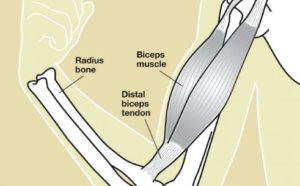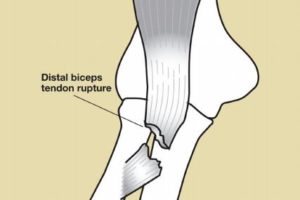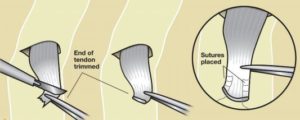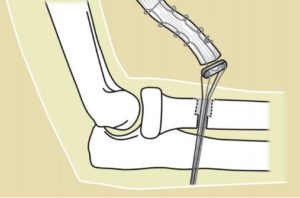Distal Biceps Tear, also known as Distal Biceps Rupture, occurs when the elbow attachment of the biceps tendon tears off from the forearm bone (the radius). This type of injury typically occurs when lifting a heavy object or an unexpected force extends the elbow rapidly.

Distal Biceps Anatomy
Signs & Symptoms of a Torn Bicep Tendon
At the time of injury, it is common to hear or feel a “pop” in the anterior aspect of the elbow. Typical symptoms include pain, swelling and bruising in the elbow and forearm. Usually, a visual change in the position and contour of the biceps muscle is present. Fortunately, the elbow continues to function, but weaker, as the brachialis muscle continues to flex the elbow and other forearm muscles can assist in twisting the forearm.

Distal Biceps Tear
Treatment for a Distal Bicep Tear
Distal biceps tears usually require surgery, as the tendon can not grow back to the bone. If non-surgical treatment is chosen, weakness with certain activities will persist and the arm may fatigue more easily. Surgery consists of reattaching the tendon, utilizing an anchor through a hole drilled into the bone.

Distal Biceps Tendon Surgery

Distal Biceps Tendon Reattachment
Rehabilitation for a Distal Bicep Tear
Recovery involves early mobilization to regain motion and function of the arm. Lifting is limited until the tendon has fully healed back to the bone. Most patients achieve full function following surgery and return to full activity, including sports and heavy lifting.
Diagrams modified from ASSH (www.assh.org)
